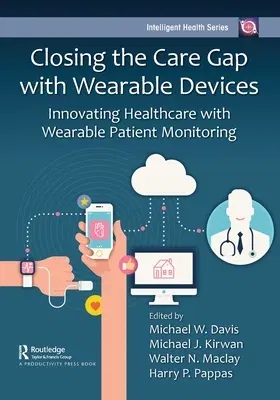Closing the Care Gap with Wearable Devices: Innovating Healthcare with Wearable Patient MonitoringPaperback, 7 December 2022

Qty
1
Turbo
Ships in 2 - 3 days
Only 1 left
Free Delivery
Cash on Delivery
15 Days
Free Returns
Secure Checkout

Part of Series
Intelligent Health
Print Length
182 pages
Language
English
Publisher
Productivity Press
Date Published
7 Dec 2022
ISBN-10
1032302305
ISBN-13
9781032302300
Description
Product Details
Book Format:
Paperback
Country of Origin:
US
Date Published:
7 December 2022
Dimensions:
25.4 x
17.78 x
1.12 cm
ISBN-10:
1032302305
ISBN-13:
9781032302300
Language:
English
Location:
Oxford
Pages:
182
Publisher:
Series:
Weight:
367.41 gm